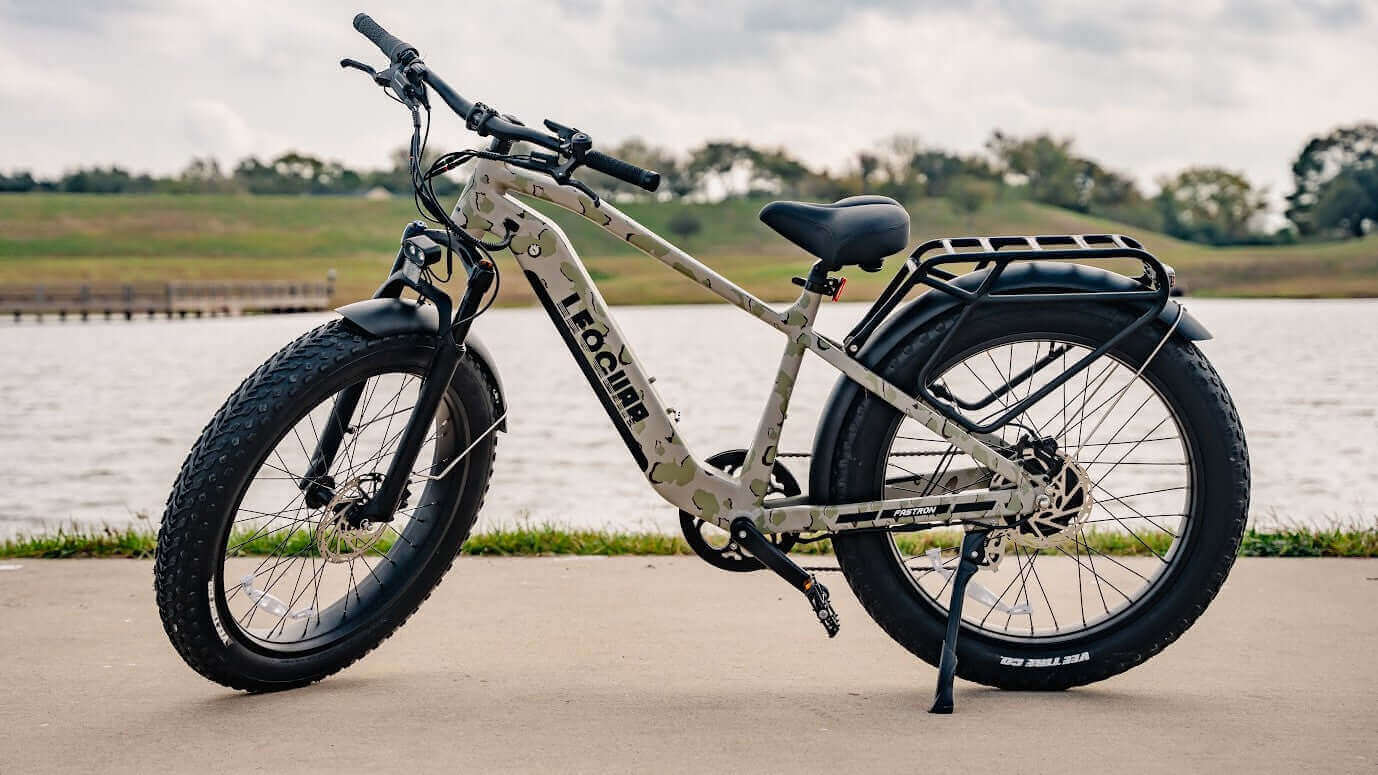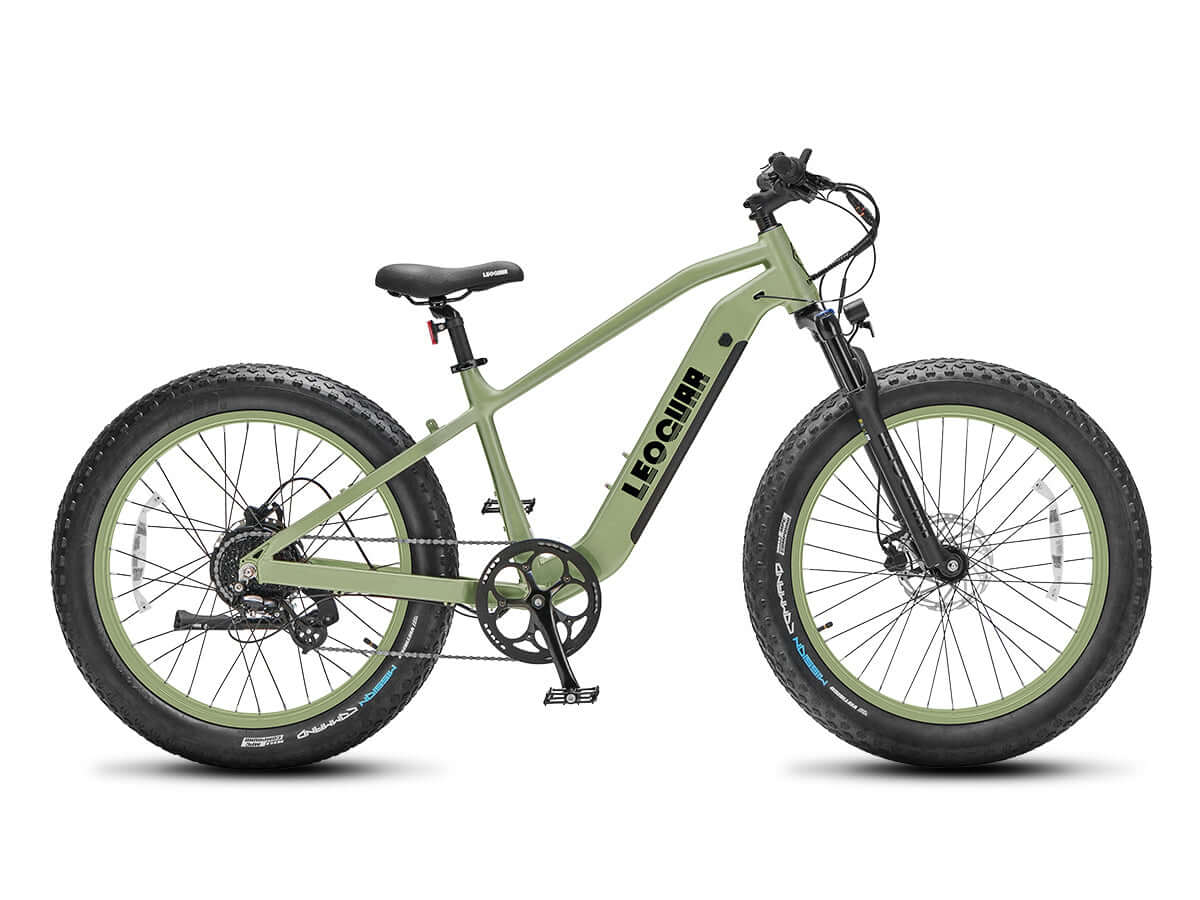
The Future of Hub Motors: Smarter, Lighter, and More Powerful in 2025
Hub motors have driven the growth of e-bikes. As we near 2025, these motors will get smarter controls, become lighter, and pack more power while keeping their simple design. Hub motors sit at the center of the ebike hub motor idea. They fit neatly into wheel hubs and send power directly so that design stays clear and maintenance is low.
Today we look at how new ideas will solve problems like bad weight balance and wasted energy. Next-generation changes will meet rider needs and fix old issues. The article shows current trends, new technology, and redesigns that change the way e-bike drivetrains work. More brands use modern materials and smart features linked by the internet, making hub motors not only efficient but also smart and safe.
These changes help the bike run better while being kind to the earth. In the end, e-bike performance and a green future go together. For a comprehensive perspective on the intersection of innovation and efficiency, refer to this LinkedIn Pulse – Intersection of Innovation & Efficiency. In the following sections, we explain how hub motors work, what new ideas will come by 2025, and how riders and makers will benefit.
Introduction
Hub motors have long been a top choice for many e-bike styles. They work well and need little upkeep. Modern ebike hub motor systems appear on commuter bikes and leisure rides. They give reliable help without messing the bike design. By 2025, hub motors will get smart controls, use less weight with new materials, and push more power. Riders will see smoother starts, longer trips, and a better overall ride.
Trends show that makers add smart parts like sensors and internet links. They use these to let the motor work with rider actions and weather changes. This makes bikes safer and helps reduce costs with smarter production. The hub motor is set to continue the e-bike revolution by making rides easy and fun. Every section here is backed by data, tests, and real stories from the industry.
Understanding Hub Motors and Their Role in E-Bikes
What is a Hub Motor?
Hub motors work by moving power straight to the wheel. They avoid extra gears and parts found elsewhere. There are two main types of hub motors. One type is direct drive; it has few moving parts and is simple in design. The other type is geared and uses internal gears to boost torque and power.
Direct drive motors make the ride smooth and quiet. Geared motors give more force at low speeds for hill climbing. Both types use the wheel hub well to save space. Unlike mid-drive motors near the bike’s cranks, hub motors send power right to the wheel. This keeps the design clear and reduces wear on parts.
Advantages and Limitations of Hub Motors
Hub motors have clear upsides. They have a clean design that makes bike care easy. They use few moving parts, which lowers the chance of a breakdown. Their direct power boost makes rides steady even on tough roads. However, hub motors have some limits. Heavy motors on the wheel might unbalance the bike. This can affect steering.
Extra torque can make control hard at times. Studies show hub motors stay popular because they cost less and are easy to fit, even though mid-drive motors work better with torque. Hub motors still lead for city and foldable bikes.
Innovations Driving the Future of Hub Motors
Integration of Smart Technologies
Smart parts will change hub motors in 2025. Tiny sensors let the motor measure torque and check temperature as you ride. Using internet connections, the motor can get updates and fixes from afar. It can change power use based on the road, rider speed, and even weather.
Studies show these smart motors react fast to road changes, which makes rides steadier and safer. Sensors help the motor work well and avoid overheating problems. This smart design cuts extra parts and lets the motor tell you when it needs care. Companies now use these ideas to make hub motors more reliable.
Lightweight Materials and Structural Redesigns
New materials are key to the next hub motors. Designers use strong but light materials like aerospace-grade aluminum and carbon fiber.
Below is a table that shows how old and new materials compare:
| Material | Weight per Unit | Strength-to-Weight Ratio | Durability Rating |
| Standard Aluminum Alloy | High | Moderate | High |
| Aerospace-grade Aluminum | Moderate | High | Very High |
| Carbon Fiber Composite | Low | Very High | High |
New materials make the motors lighter and let designers change the look and structure. They help cool the motor and make it last longer. Better designs fit the compact motor inside and let air flow better through the housing. This mix of light parts and smart design makes the motor work fast and well.
A lighter hub motor means a bike that can move quicker and saves battery energy. New materials and design set a fresh mark for hub motors in 2025.
Enhanced Power and Performance Metrics
More power is a big promise for future hub motors. New designs will aim for 40Nm torque or more, which helps bikes start and climb hills better. Data shows that using power better can push battery range up by 15% on the same ride. This means rides are longer and less tiring for the rider.
Cyclists will enjoy a natural ride as sensors adjust the motor to suit the pedaling and road. For extra details on performance, check out Cycling Weekly – Best Electric Bikes. These tech improvements come from years of engineering work. They show that new hub motors are a big step forward for e-bike performance.

How These Innovations Will Impact E-Bike Design and User Experience
Improved Ride Quality and Responsiveness
New hub motors will make rides smoother and more responsive. Smart sensors and controls give a steady push when needed. The motor tracks rider moves and the bike’s motion to tone down sudden bursts of power. This keeps the ride natural and safe.
Better control means the bike will switch well between pedal power and throttle use. It stays balanced and quick all the time.
Extended Range and Battery Efficiency
Lower weight is key to a longer bike ride. Lighter hub motors help the bike use less battery power. Smart power use sends energy where it is needed most. This planning lets riders go further before the battery runs low.
Users have seen up to a 20% jump in range with new lightweight hub motors. Less weight and better design add up to a mix of speed and efficiency.
Safety and Reliability Enhancements
Safety is a top worry for e-bike makers. New hub motors have torque sensors and firm mounts that lower the risk of failure.
They monitor heat and load changes and can slow down or shut off if needed. Fewer cables and parts cut down on electrical issues. Riders feel safer when they know the motor checks itself and fixes problems early. Test riders say these changes make the ride steadier and more controlled.
Unique Perspectives and Case Studies
Case Study – From Concept to Reality
A new e-bike model uses the latest hub motor tech. Early models had smart sensors that adjust power based on rider input and weather. The design used a strong yet light carbon fiber housing and smart software to mix power and energy use well. Riders said the bike started smooth, climbed hills better, and went further on one charge.
Numbers showed a 40Nm torque, a 15% boost in efficiency, and a big drop in weight compared to older models. This study shows that smart, light, and strong hub motors change the e-bike market.
Expert Interviews and Insights
Engineers and riders agree that hub motors must be smarter and more connected. Engineers note that sensors and internet links already make motors last longer and work better. They say that changing power on the fly and warning of issues are not just ideas but real parts of new models. Riders say the feel of these motors is as good as high-end mid-drive systems but with less upkeep.
Their views back up the need for more smart parts to change the hub motor experience. Experts agree that the shift to smarter and lighter motors is a true change in safety and performance for e-bikes.
Future Challenges and Opportunities for Hub Motor Development
Technological Barriers and R&D Focus
Even with new tech, hub motors face tough problems. Heat control is one issue; as motors grow stronger, keeping them cool without losing power is hard. Fitting smart sensors into small designs is another challenge. Solving these problems needs more research and teamwork between material experts and engineers.
Researchers work on better sensors, tougher light materials, and smart care methods. Each fix helps meet the hard needs of modern e-bike use.
Market Trends and Sustainability Considerations
Market trends push for greener transport options. Better hub motors follow this trend by cutting down on waste and energy use. Light designs help save battery energy, and smart systems make power use smart on different roads. This means lower energy use and fewer carbon emissions from e-bikes.
New rules from governments also support green transport choices. This mix of customer needs, rules, and new tech gives makers a good chance in the eco-friendly market.
Predictions for Beyond 2025
Looking past 2025, experts see hub motors getting even smarter. Future motors may include AI that predicts when care is needed and makes power changes on its own.
They could even learn from how you ride and adjust by themselves for best performance and efficiency. New designs might let riders upgrade or change the motor as tech grows. This change will let bikes keep up with new ideas and offer long-term value for users.
Conclusion and Key Takeaways
Hub motors are set for big changes by 2025. They will get smart controls, use light new parts, and deliver more power. Smart sensors will make motors work with changing road and rider needs. This leads to better rides, longer trips, and higher safety.
Makers can use these changes to stand out in a hard market. Riders get a ride that is smart, light, and strong in many ways. Continued work and new ideas will fix old limits and show the full abilities of hub motors. The new hub motors will shape the future of riding by 2025 and beyond.
In summary, the hub motor is not just getting a small upgrade. It is being rethought to combine smart tech, light materials, and strong power for both city trips and long rides. For further detailed industry perspectives and technical deep dives into these innovations, readers are encouraged to explore additional authoritative sources as the field evolves.
FAQ
-
Q: How much more powerful are 2025 hub motors compared to previous models?
A: 2025 hub motors deliver up to 40Nm torque and offer 15% more battery efficiency than previous generations.
-
Q: What smart technologies are integrated into modern hub motors?
A: Modern hub motors feature IoT connectivity, torque sensors, temperature monitoring, and AI-driven performance optimization.
-
Q: How do new materials improve hub motor performance?
A: Aerospace-grade aluminum and carbon fiber composites reduce weight while improving durability and heat dissipation.
-
Q: Are smart hub motors more reliable than traditional ones?
A: Yes, smart sensors monitor performance and predict maintenance needs, reducing breakdowns and extending motor life.
-
Q: What's the main advantage of 2025 hub motors for everyday riders?
A: Riders benefit from smoother acceleration, longer range, and intelligent power adjustment based on riding conditions.









































Leave a comment